Martin Regborn (Sweden) and Venla Harju (Finland) won the European Orienteering Championships (EOC) Long distance 2022 in Estonia. The courses offered exceptionally tricky orienteering where all runners struggled to find the controls and the best route choices, giving two of the outsiders the possibility to take the victories.
The biggest favourite in the women’s class, Tove Alexandersson (Sweden) did many big mistakes in the Estonian forest – losing 7-8 minutes on mistakes and poor route choices, but still managed to secure a silver medal 17 seconds behind Harju. Another Finnish orienteer, Marika Teini, took the bronze medal in the women’s race, making the championship a big success for the Finnish team with new National Team coach Thierry Gueorgiou already after the first race.
In the men’s class, Eskil Kinneberg (Norway) took the silver medal, with Elias Kuukka (Finland) in third. An interesting side story here: Both Regborn and Kuukka missed the cut for the EOC Middle after bad experiences in yesterday’s Middle Qualification. Regborn got disqualified whereas Kukka finished 21st in his heat (with 20 runners qualifying for the finals).
Analysis Women
The above graphical split time illustration shows the time gaps among the Top 3 throughout the course, with the current leader as reference. From the illustration you can see that Tove Alexandersson lost more than 2 minutes already to the first control. High speed the next controls allowed the Swede to get a bit closer to the leaders, but then another 2 minutes of time loss on the long leg to control 5 and another 2 minute mistake on the next leg to control 6 gave Alexandersson a bit gap up to the lead (which at this time was Andrine Benjaminsen, Norway, see the illustration below that includes more runners). From here and onwards Alexandersson ran a fairly good race and managed to beat Benjaminsen with nearly 10 minutes, but Venla Harju’s advantage of nearly 4 minutes proved to be too much for Alexandersson. Alexandersson did by no means have an excellent race from control 6 to the finish – making mistakes to control 11, 12 and 14 among others – the last one shown live on television.
Venla Harju’s race was also far from perfect. After being in the lead at control 5, she made mistakes at both control 6 and 7, losing more than 2 minutes to Benjaminsen who took over the lead. Benjaminsen did however make a huge 3 minute mistake to control 9, and Harju could thus get back into the lead. Already on the next leg to control 10 Harju did her next big mistake, however, losing nearly 2 minutes to Teini who took the lead for the first time in the competition. Teini managed to keep the lead until control 16, but then Harju passed her and kept the lead to the finish. Benjaminsen meanwhile looked like a medalist for a while, but another big 3+ minute mistake to control 12 ruined the chances of the Norwegian. Sara Hagström also had a very good race, but lost a lot on the longest leg. Another runner who was in the battle for the medals was Johanna Öberg (Sweden) who had a very good finish – but she lost too much on the first part of the course, especially on the two first long legs.
Below GPS-data from some key legs are included to show more of the story behind the splits illustrations.
Control 1: Alexandersson’s big mistake – 2:20 lost to Simona Aebersold. Aebersold, a pre-race favourite, made too many mistakes to battle for the medals.
Control 2: Alexandersson is angry(?) and runs fast, takes more than half a minute on Harju and all the other medal contenders. Benjaminsen, Aebersold and Öberg lose more than 2 minutes due to bad micro route choices (it is not as easy as it looks on the map!).
Control 5: The long leg. Here Hagström is the only one of the top runners running to the left, losing nearly 5(!) minutes to Benjaminsen. Benjaminsen, Harju and Teini run very good legs. Alexandersson loses 2 minutes due to a quite strange looking route on the first part of the leg – she might have considered running to the left and then changing her mind? This leg had a very strange forbidden area at the middle of the leg (the same also for the men, see more details there) where Aebersold run around to the right and lost time. All in all, this was not a very good leg in my opinion. The next illustration shows a detailed view of the forbidden area, whereas the following figure shows the different route choices taken here.
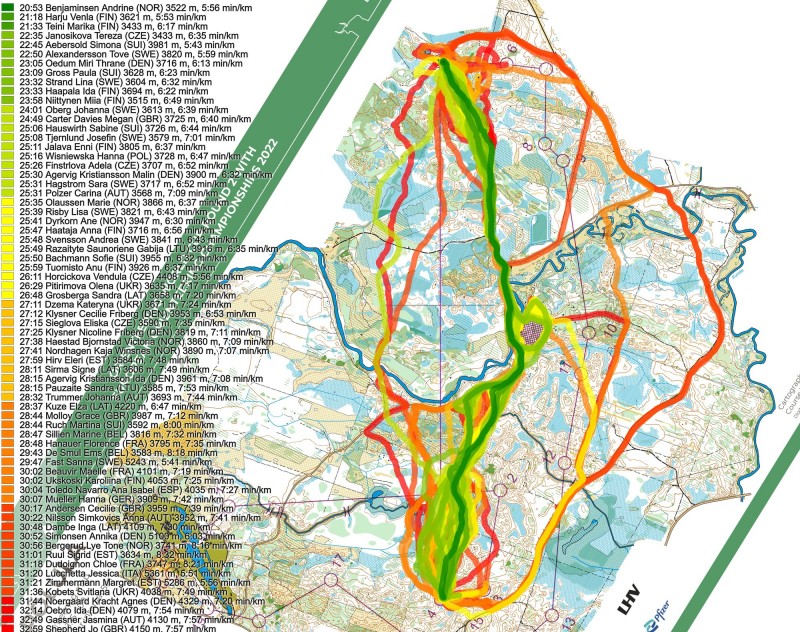
Control 6: Alexandersson’s next mistake. She probably read to the wrong control (control 7), and discovered it without losing more than 2:20. Note that Harju loses nearly as much time as Alexandersson here, but Harju does a real mistake, struggling to find the control. This is where Harju loses the lead to Benjaminsen.
Control 9: Here Benjaminsen loses the lead to Teini with a 3+ minute mistake. Note again how fast Alexandersson runs – probably with too high risk …
Control 10: Here Harju makes a quite big mistake, losing nearly 3 minutes to Alexandersson. Harju manages to save her race though, while Aebersold does not and searches for abnother 6(!) minutes.
Control 12: Here Benjaminsen loses another 3 minutes, and Hagström and Alexandersson also lose time.
Control 14: Another time loss for Alexandersson.
Control 15: Time loss for Teini (and Hagström).
Control 17: Another time loss for Teini.
Control 18: Alexandersson takes a lot of time on Harju, but not enough to take the victory from the Finnish European Champion.
Analysis Men
The above GPS split time illustration shows the split times of the Top 5 in the men’s class along the course. See below for a similar split time illustration where more runners are included. The split time illustration clearly shows that Emil Svensk had the lead for most of the race, looking like a winner until his 2 minute mistake at the 24th control. When Svensk did his mistake, Eskil Kinneberg took over the lead, and for a while it looked like we would have a Norwegian champion again. Then Kinneberg started losing some seconds here and there – while Martin Regborn ran a really good race and took time on Kinneberg on every control – in the end winning with more than 30 seconds. Elias Kuukka also had a very good race, and was actually in shared lead with Svensk at control 23, before Svensk made his mistake. Kuukka did however also a mistake at control 24 (although much smaller) and did not have the speed in the end to take gold or silver. Kasper Fosser was the only other runner with a race development which could have given a medal, but too many small mistakes combined with not having his normal speed advantage on his competitors cost him a medal this time.
Of the remaining runners, Miika Kirmula and Gustav Bergman both showed potential for good races, but did too many mistakes and did not quite manage to run high enough speed for all of the course.
Below is also a look at some GPS-data from the men’s race.
Control 1: Kirmula and Bergman are on the defensive already here.
Control 2: Fosser loses around 30 seconds here – Bergman half a minute more. Kirmula is fantastic here.
Control 3: Time loss by Regborn here – looks like a direction mistake that costs nearly 45 seconds.
Control 5: Kinneberg and Kuukka lose some seconds here – Regborn has started to run really well.
Control 7: The same strange forbidden area on the long leg as in the women’s class. In the men’s class it nearly cost Regborn the gold medal, but Regborn runs so fast on the leg that even with 70-80 seconds lost by running around the forbidden area on the right side, he only loses 20 seconds to the best time on the leg among the top runners (Emil Svensk) and another 10 seconds to Max Peter Bejmer who is fastest overall on the leg.
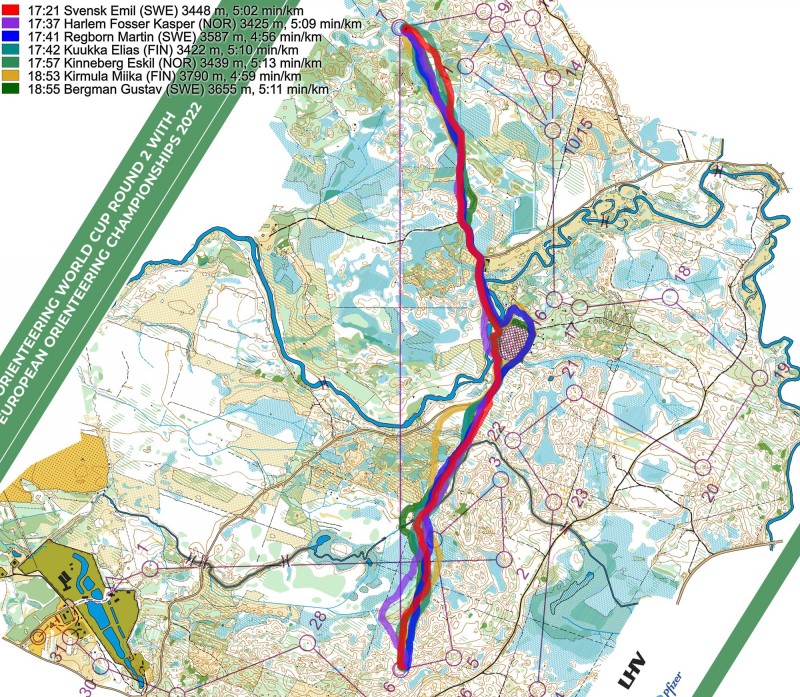
Here we zoom in on the part of the leg, with routes and times of runners running left/straight/right shown. Note that one (Ymsen) runs through the forbidden area and is disqualified. Some cross the river (red) and are fastest, some run in the river for some tens of meters (blue) and lose some time while other run around to the right and lose 70-80 seconds or more (green).
Here the times of the ones running around to the right are shown:
And finally the part without any routes.
Control 9: Mistake by Svensk – loses 40 seconds.
Control 16: Again Regborn does not take the chance to cross the river outside of the crossings (as the only one of the top runners) – again he loses significant time, nearly 1:30 on Svensk. I don’t like this type of course setting. Why show passages when it is better to cross the river elsewhere?
Control 18: Timeloss by Kirmula.
Control 23: Timeloss by Svensk.
Control 24: The big timeloss by Svensk – this is where he loses his lead and starts losing the race.
Control 26: Mistake by Fosser.
Control 28: Another timeloss by Svensk.
Control 29: This is where Kinneberg loses the gold medal. Also another mistake by Svensk here (or his he just getting tired?).
Maps and GPS-tracking
See links to maps and GPS-tracking below.
EOC 2022 Long distance Men

» See map in omaps.worldofo.com
EOC 2022, Long distance Women (9.57)

» See map in omaps.worldofo.com
Results
Men
| 1 | Martin Regborn | Sweden | 1:39:18 | 5:44 | |
| 2 | Eskil Kinneberg | Norway | 1:39:49 | +0:31 | 5:46 |
| 3 | Elias Kuukka | Finland | 1:40:24 | +1:06 | 5:48 |
| 4 | Kasper Harlem Fosser | Norway | 1:40:56 | +1:38 | 5:50 |
| 5 | Emil Svensk | Sweden | 1:42:37 | +3:19 | 5:56 |
| 6 | Olli Ojanaho | Finland | 1:44:39 | +5:21 | 6:03 |
| 7 | Henrik Johannesson | Sweden | 1:44:46 | +5:28 | 6:03 |
| 8 | Eetu Savolainen | Finland | 1:45:11 | +5:53 | 6:05 |
| 9 | Gustav Bergman | Sweden | 1:45:28 | +6:10 | 6:05 |
| 10 | Miika Kirmula | Finland | 1:45:29 | +6:11 | 6:06 |
| 11 | Topi Syrjalainen | Finland | 1:48:16 | +8:58 | 6:15 |
| 12 | Magne Daehli | Norway | 1:48:25 | +9:07 | 6:16 |
| 13 | Gaute Steiwer | Norway | 1:48:32 | +9:14 | 6:16 |
| 14 | Jonas Egger | Switzerland | 1:48:33 | +9:15 | 6:16 |
| 15 | Luis Nogueira | Spain | 1:48:42 | +9:24 | 6:17 |
| 16 | Artem Panchenko | Ukraine | 1:49:44 | +10:26 | 6:20 |
| 17 | Quentin Moulet | France | 1:50:08 | +10:50 | 6:22 |
| 18 | Aleksi Karppinen | Finland | 1:50:12 | +10:54 | 6:22 |
| 19 | Viktor Svensk | Sweden | 1:50:14 | +10:56 | 6:22 |
| 20 | Aaro Aho | Finland | 1:51:03 | +11:45 | 6:25 |
Women
| 1 | Venla Harju | Finland | 1:29:52 | 6:57 | |
| 2 | Tove Alexandersson | Sweden | 1:30:09 | +0:17 | 6:58 |
| 3 | Marika Teini | Finland | 1:30:44 | +0:52 | 7:01 |
| 4 | Sara Hagstrom | Sweden | 1:31:23 | +1:31 | 7:04 |
| 5 | Lina Strand | Sweden | 1:32:29 | +2:37 | 7:09 |
| 6 | Johanna Oberg | Sweden | 1:32:43 | +2:51 | 7:10 |
| 7 | Paula Gross | Switzerland | 1:34:12 | +4:20 | 7:17 |
| 8 | Andrine Benjaminsen | Norway | 1:35:33 | +5:41 | 7:23 |
| 9 | Sabine Hauswirth | Switzerland | 1:36:19 | +6:27 | 7:26 |
| 10 | Tereza Janosikova | Czech Republic | 1:36:42 | +6:50 | 7:28 |
| 11 | Cecilie Friberg Klysner | Denmark | 1:38:42 | +8:50 | 7:38 |
| 12 | Enni Jalava | Finland | 1:39:09 | +9:17 | 7:40 |
| 13 | Marie Olaussen | Norway | 1:39:14 | +9:22 | 7:40 |
| 14 | Simona Aebersold | Switzerland | 1:39:23 | +9:31 | 7:41 |
| 15 | Sandra Grosberga | Latvia | 1:40:40 | +10:48 | 7:47 |
| 16 | Ida Haapala | Finland | 1:41:04 | +11:12 | 7:48 |
| 17 | Sanna Fast | Sweden | 1:41:37 | +11:45 | 7:51 |
| 18 | Miia Niittynen | Finland | 1:41:50 | +11:58 | 7:52 |
| 19 | Miri Thrane Oedum | Denmark | 1:41:59 | +12:07 | 7:53 |
| 20 | Andrea Svensson | Sweden | 1:42:10 | +12:18 | 7:54 |
 World of O News
World of O News
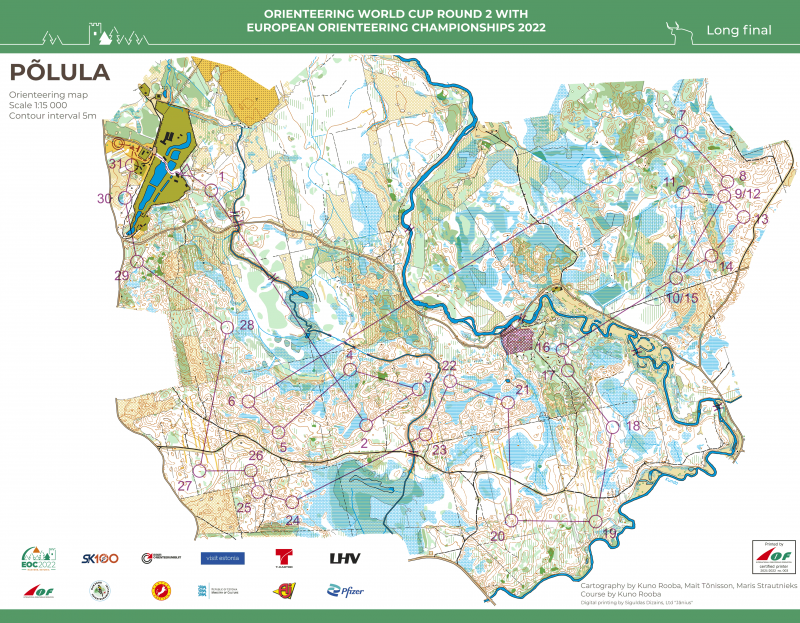
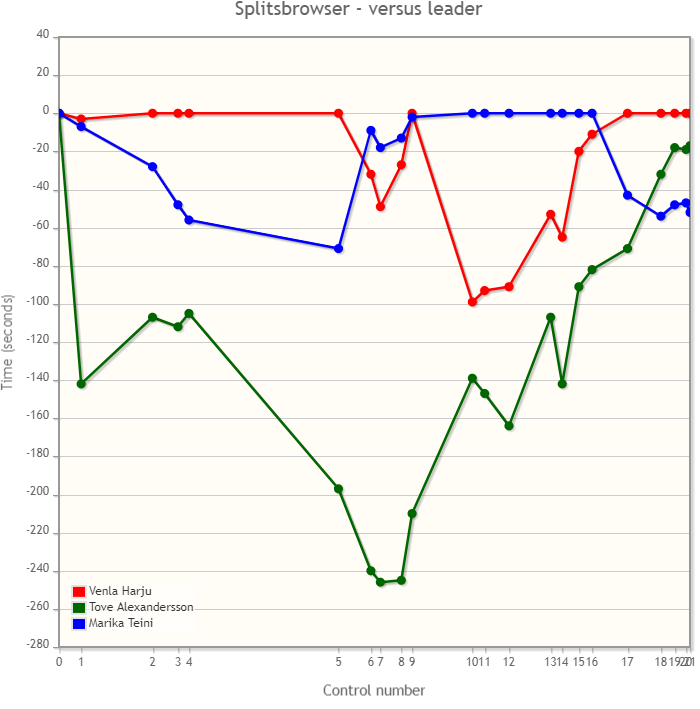
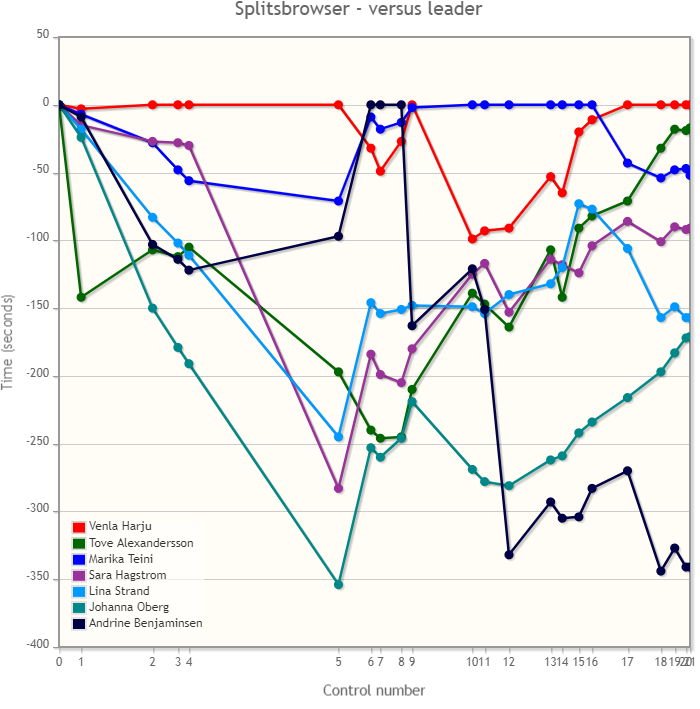
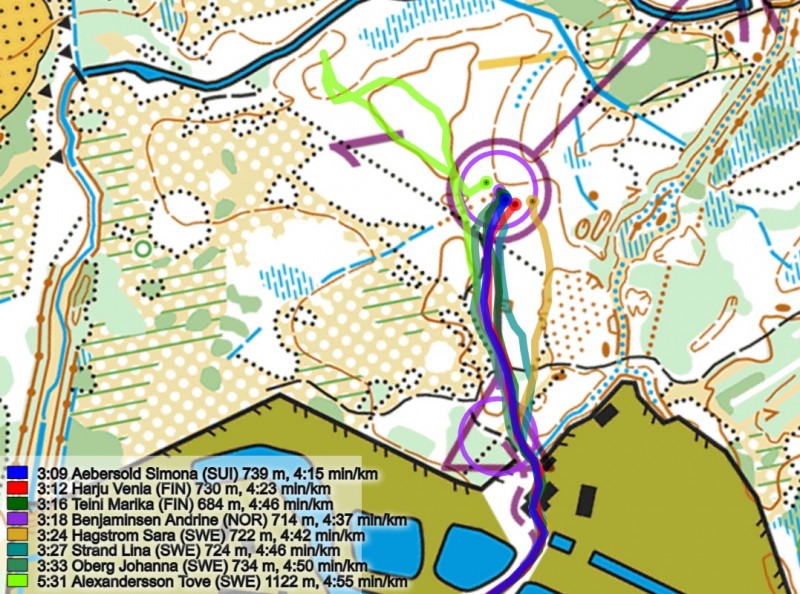

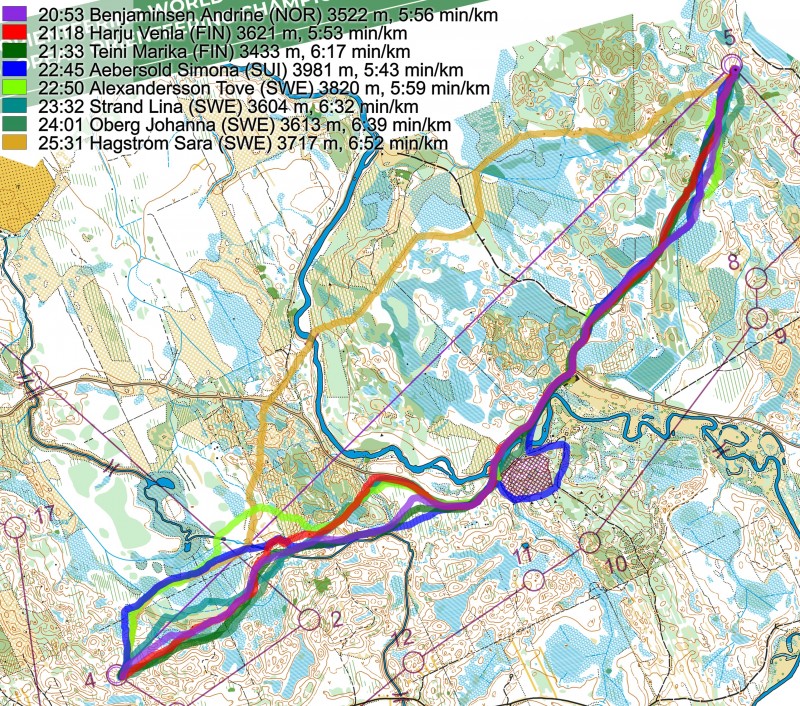

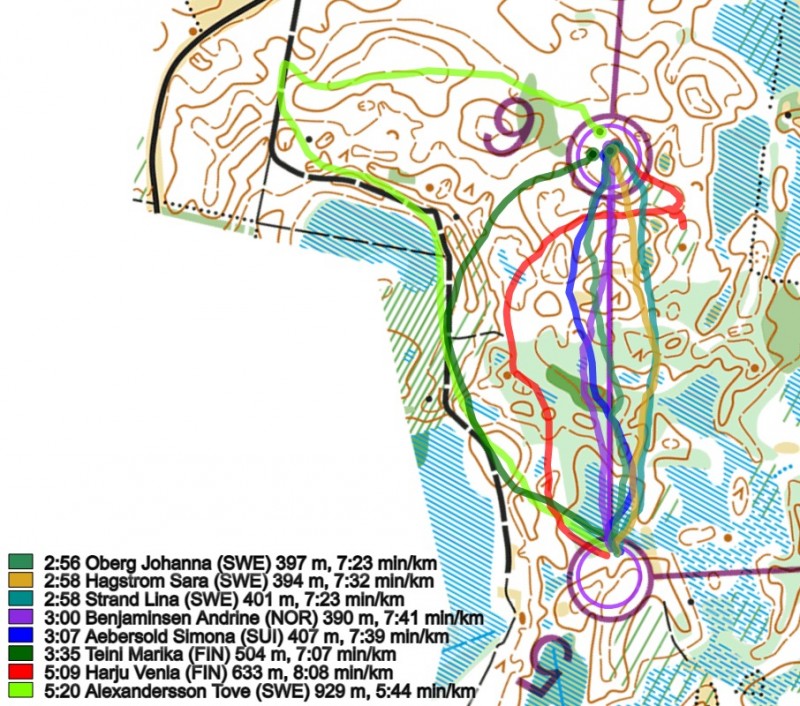
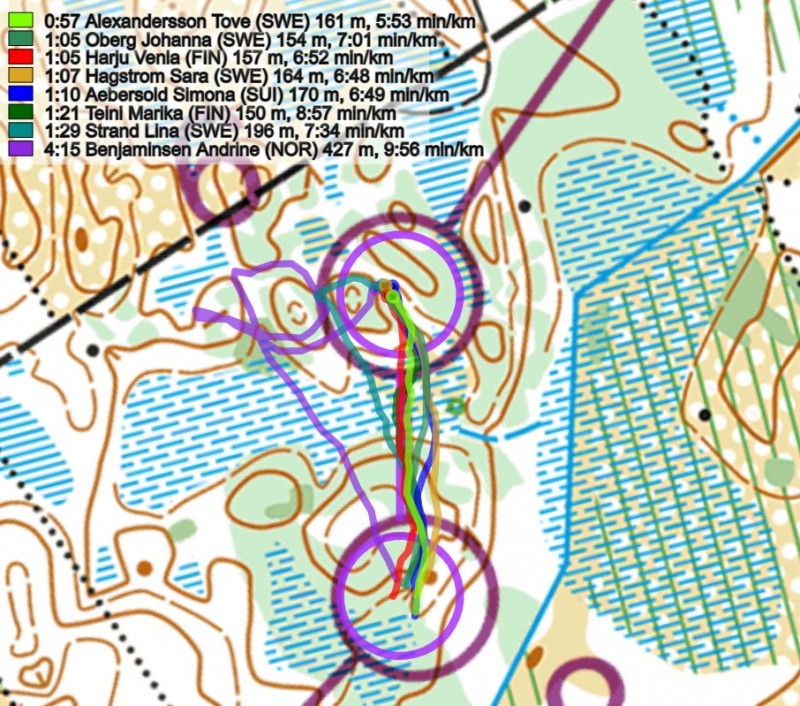
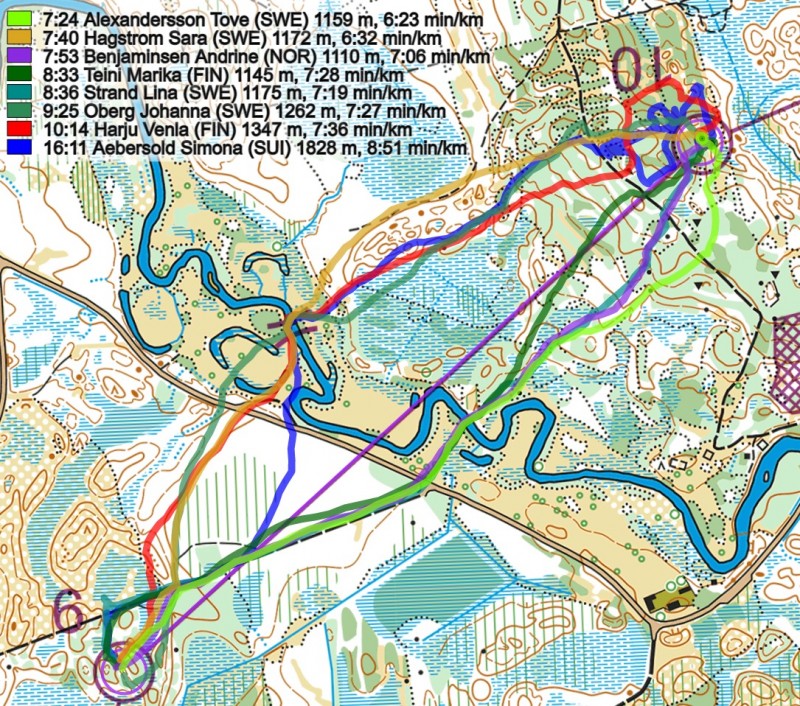
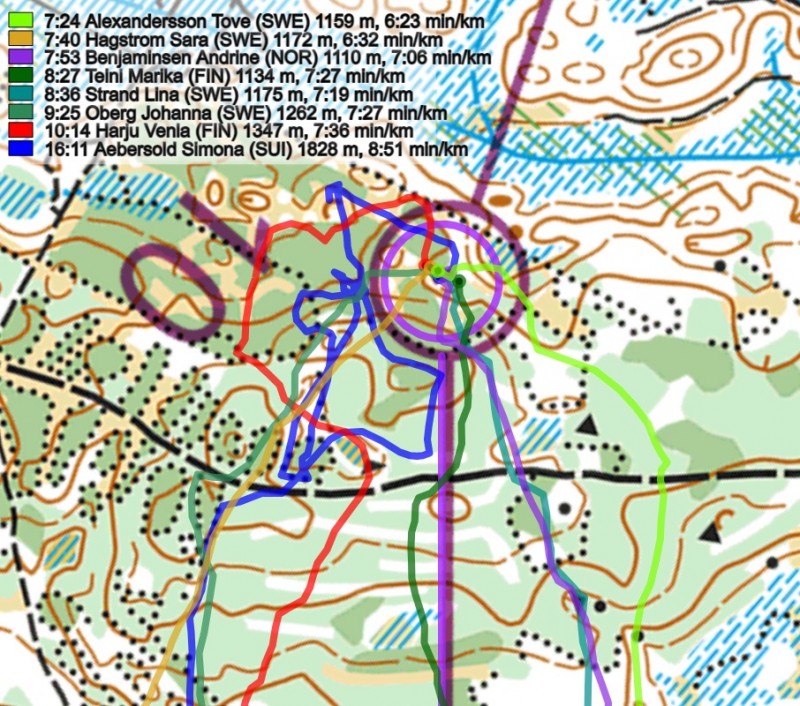
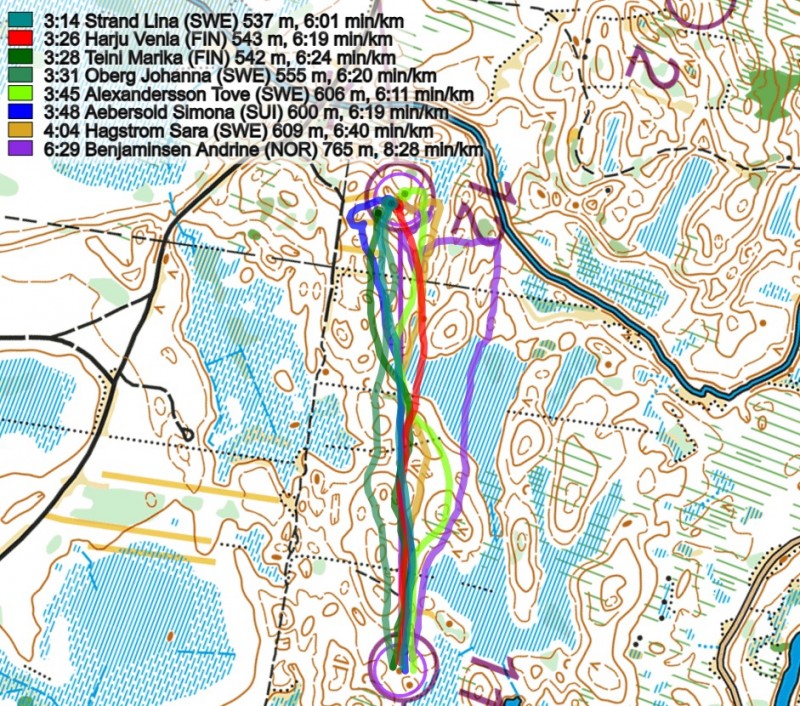
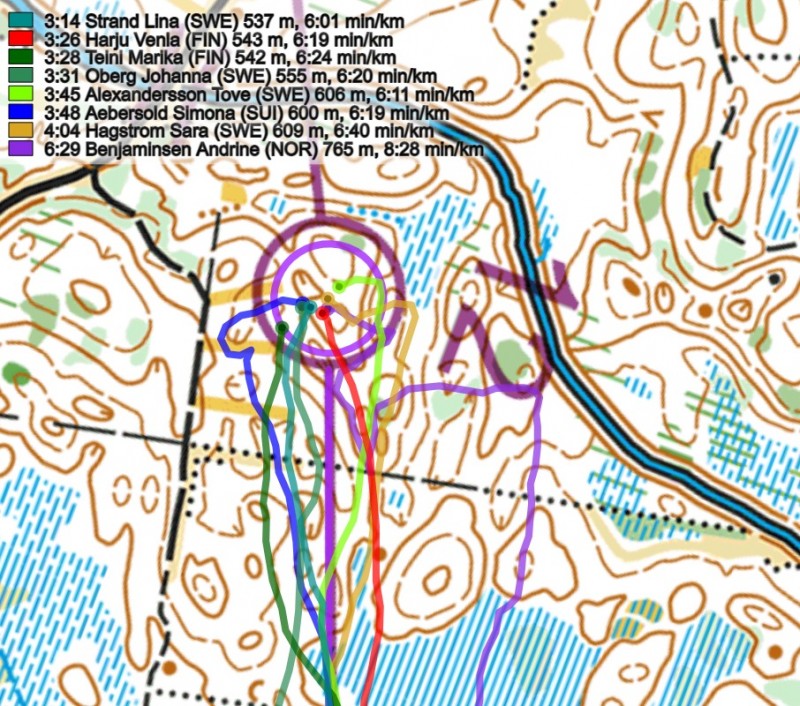
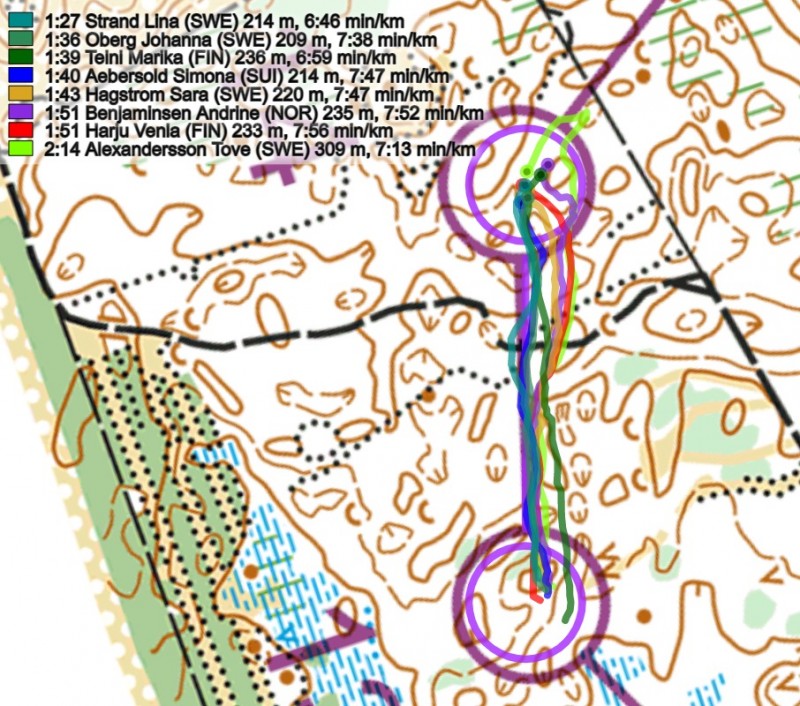

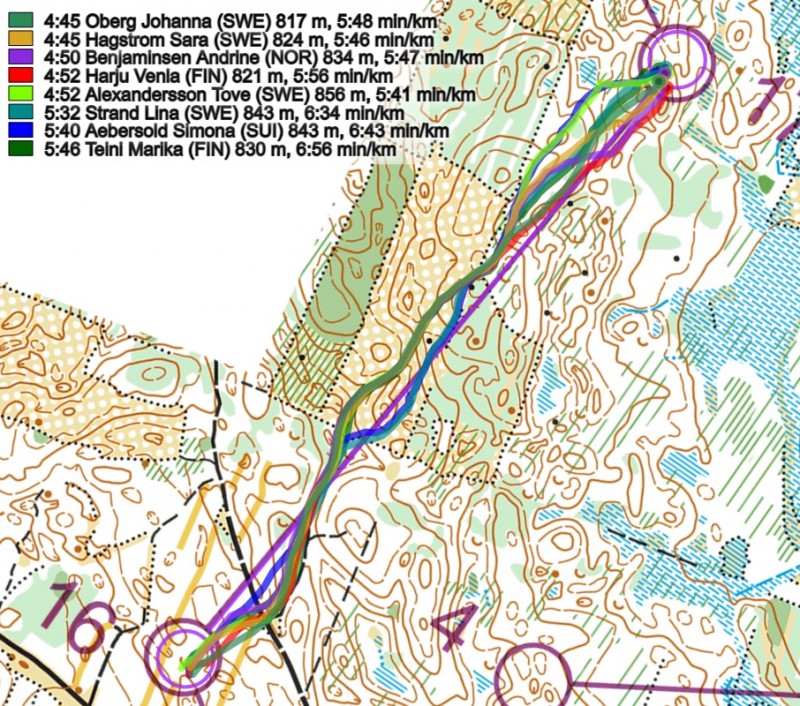
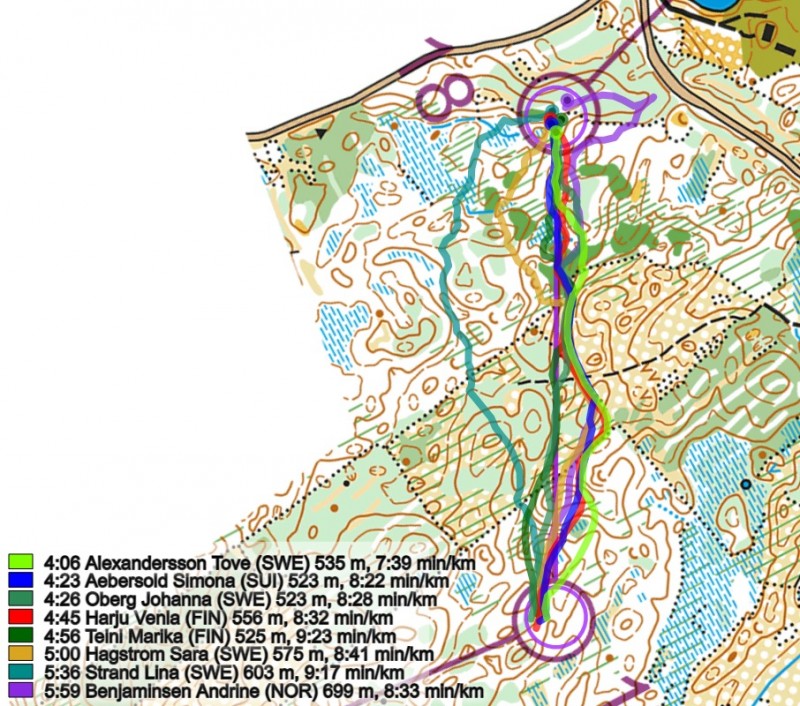
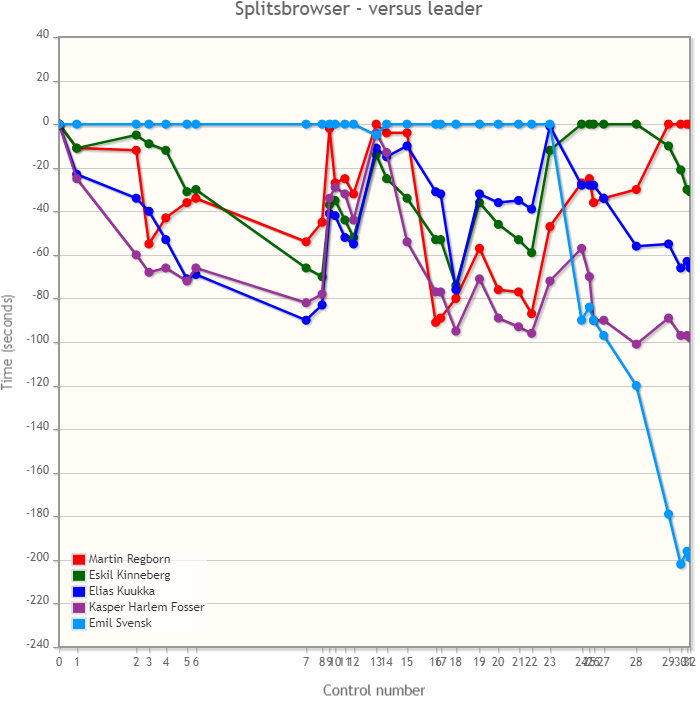
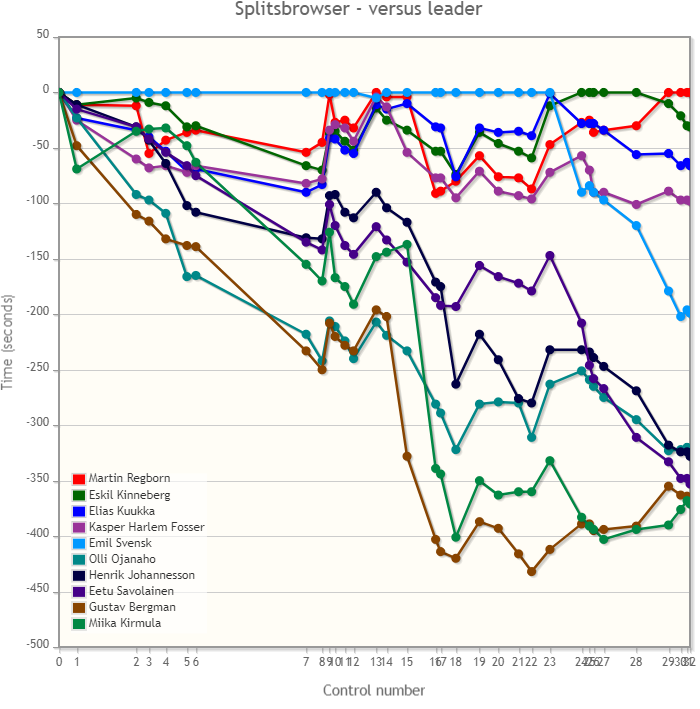

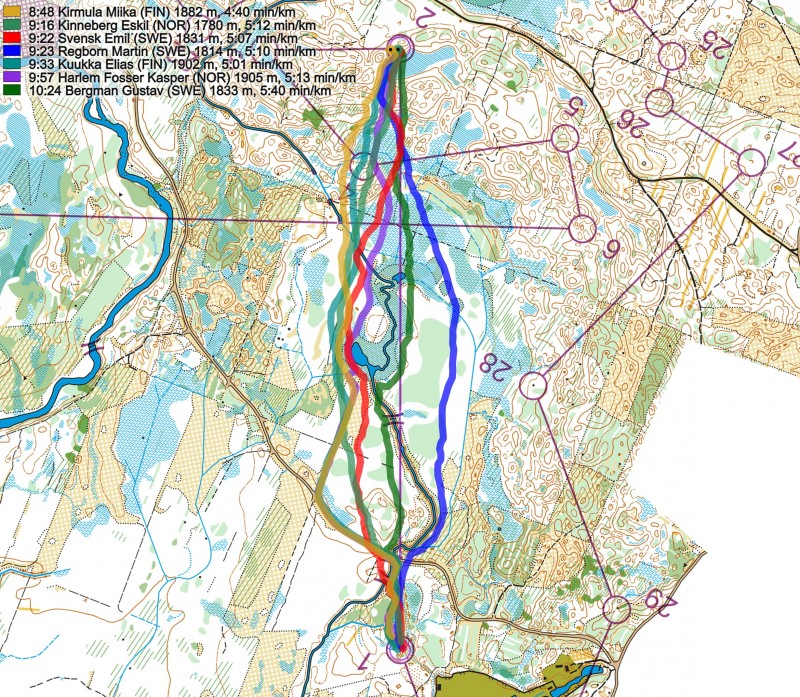
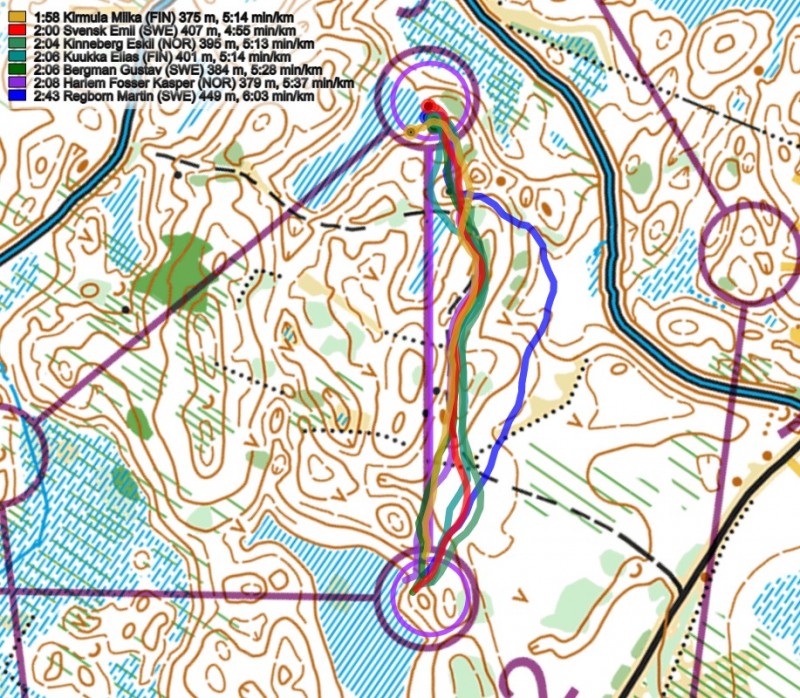
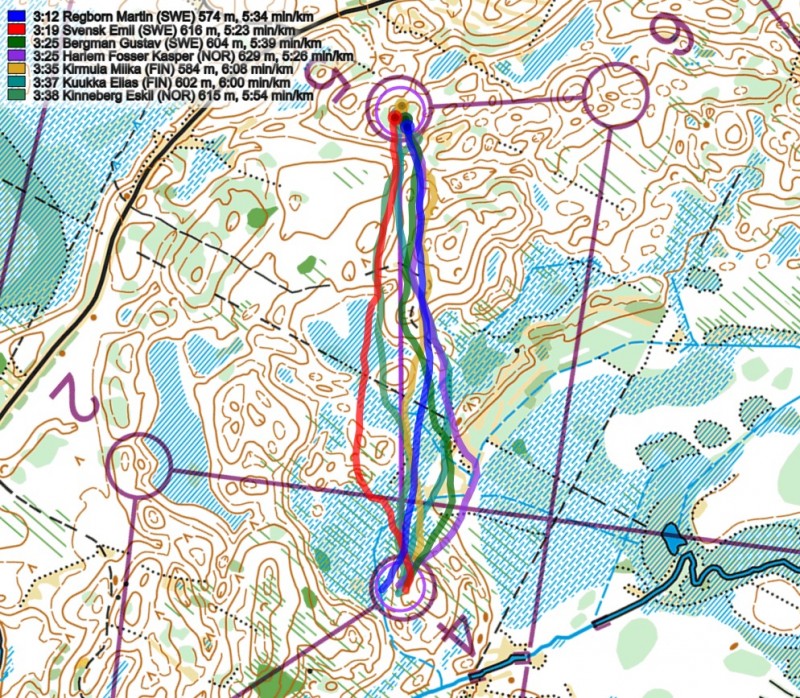
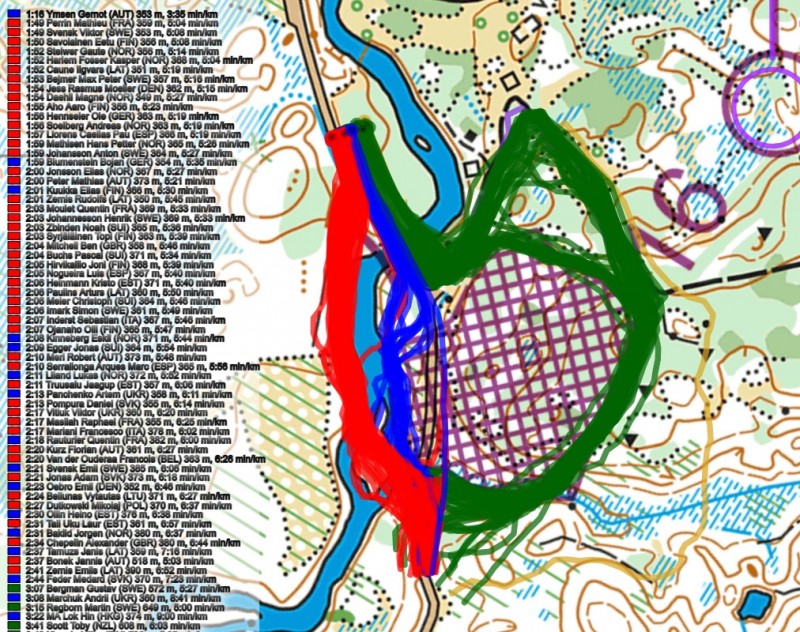
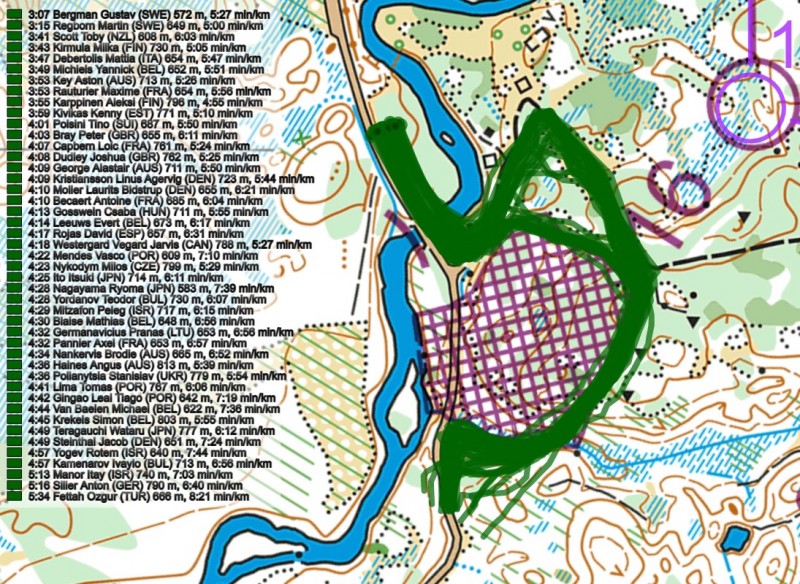
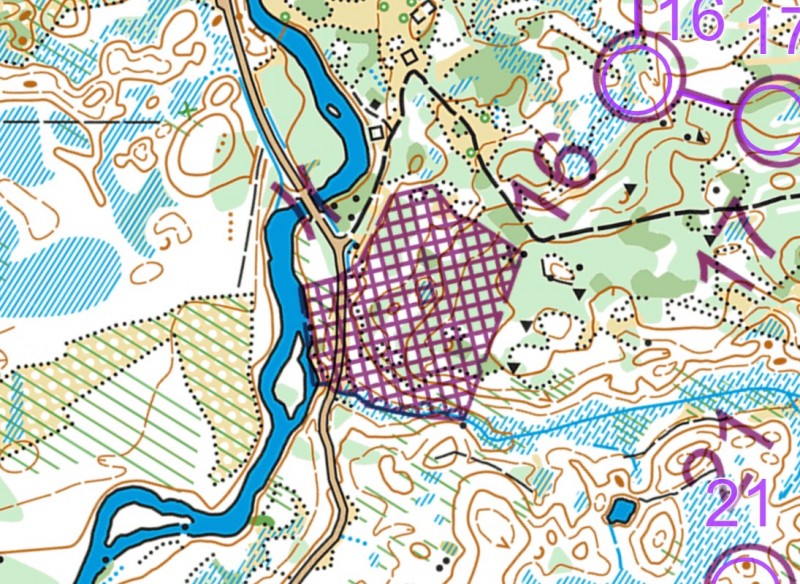
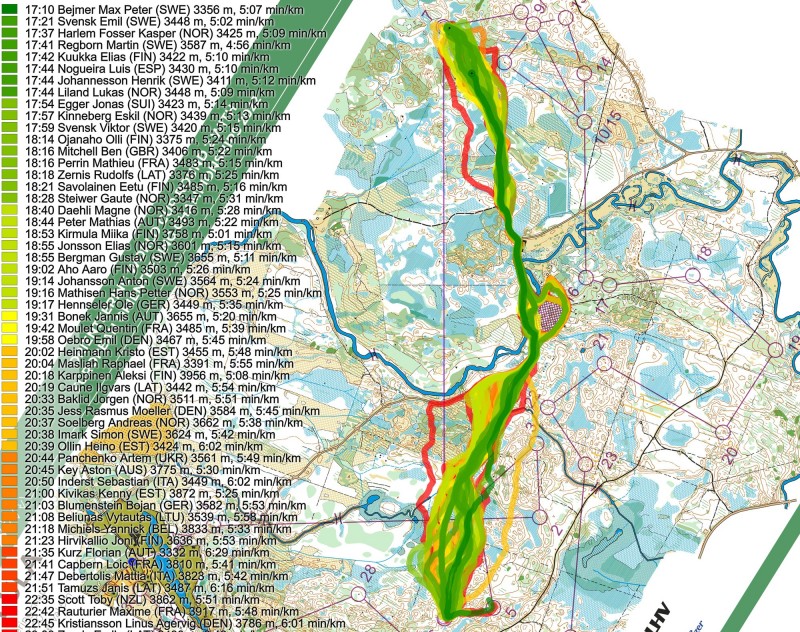
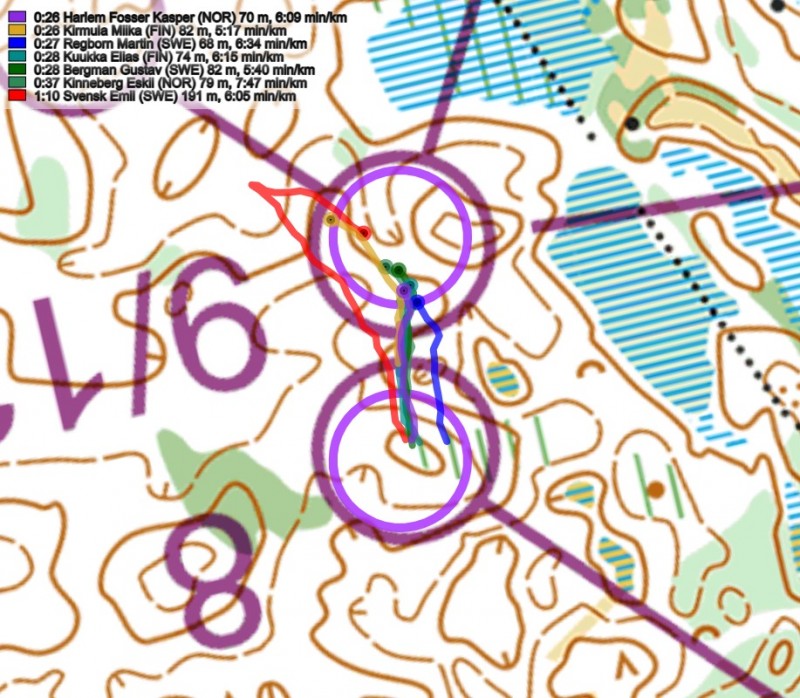
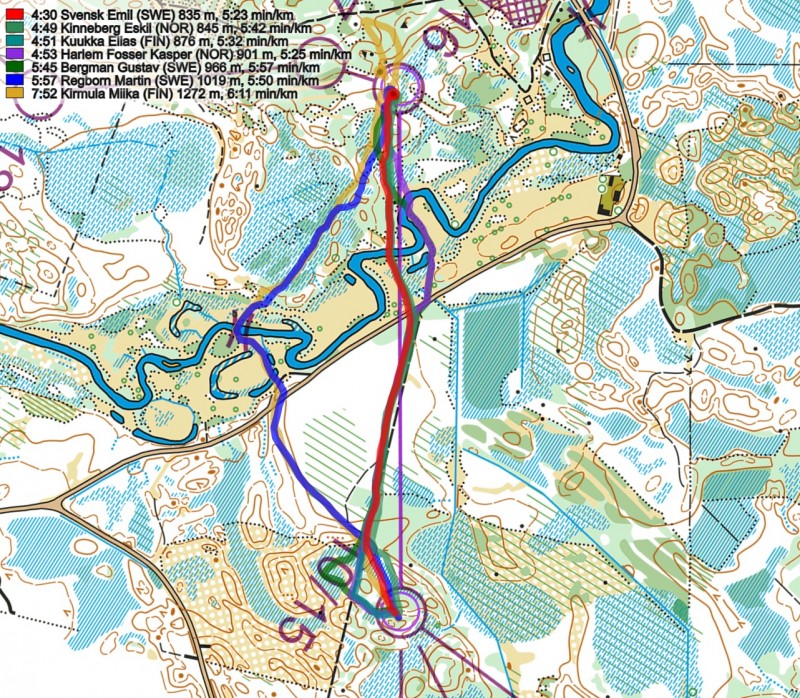
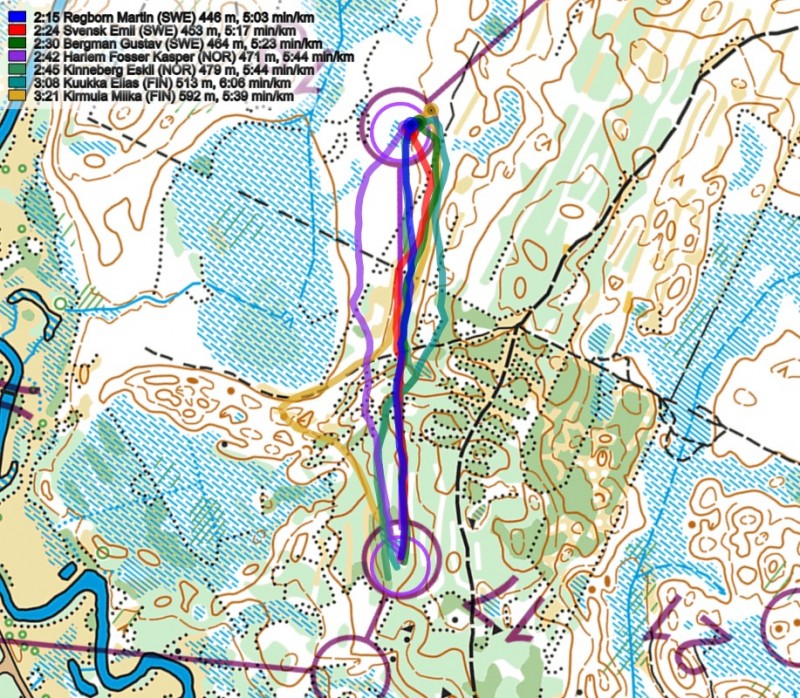
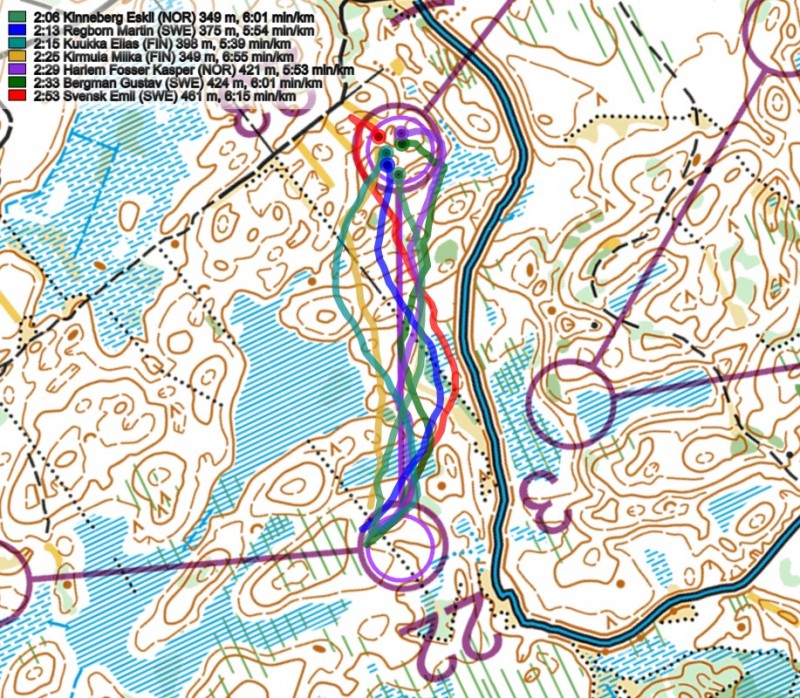
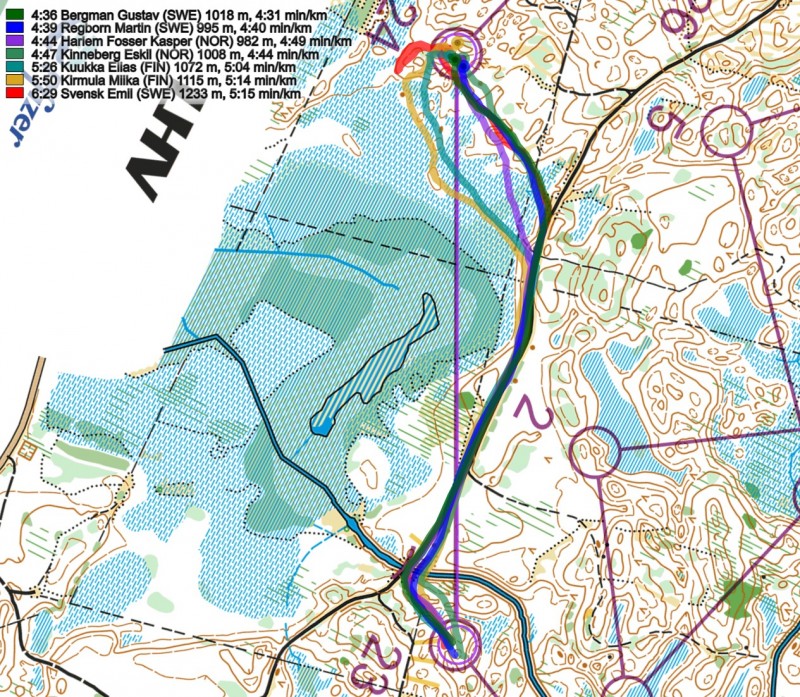
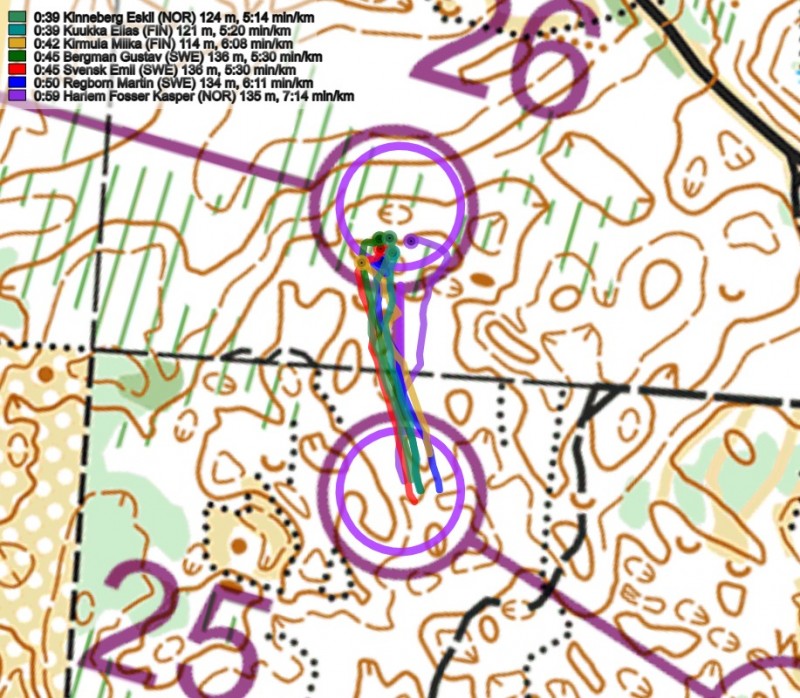
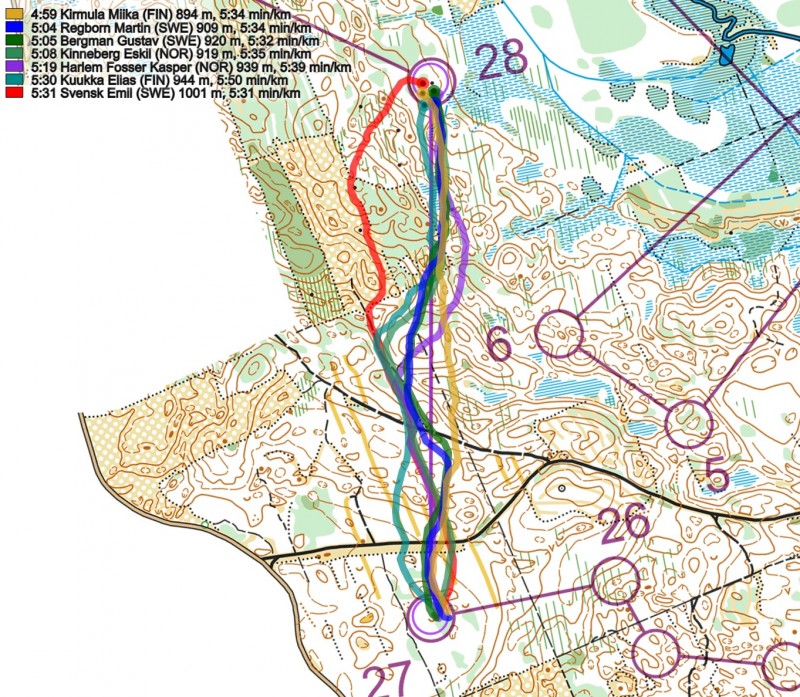
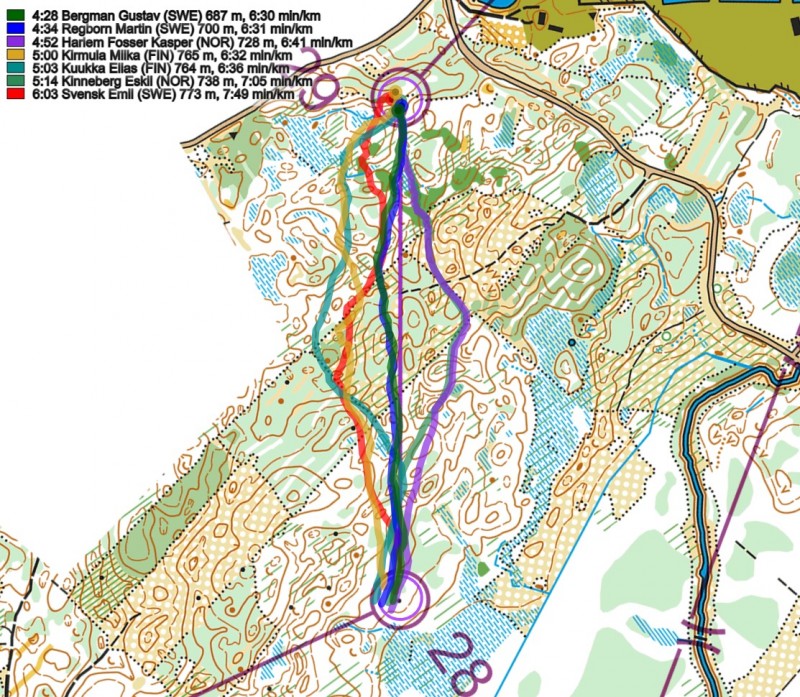



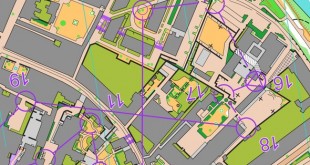
Does anybody know what information the runners were given about the rivercrossing circumstances before the race? Winner Martin Regborn told in an interview to swedish television after the race that ’some areas along the river might be sealed off due to too deep water or too heavy streams’. That was the information he was running with, and losing quite some time on his choices in this matter.
Were there any such areas? And if so, why weren’t they marked on the map? And if not, why were the runners given that false information?
This whole coursesetting with the confusing rivercrossings leaves a bad taste not worthy a championship race…
On eventor https://eventor.orienteering.org/Events/Show/6817 you can see the TOM slides for the longdistance. There you also find, what the athletes were told. Guess the biggest problem was, that the coursesetters planned the courses like they thought that the “uncrossable” river are OOB. The stuff mentioned about the rivers in the TOM are only about the “small” ones.
Well, the info there concerning rivercrossings is very sparse, and really doesn’t include what’s important for the 6-7 and 15-16 legs on the mens course, and 4-5 and 9-10 on the womens course.
”There are two crossable watercourses (symbol 304) between uncrossable bodies of water (symbol 301). In these places the uncrossable parts are marked with tape for clarity. You can expect 20-25 cm of water and a shallow layer of mud under it.”
All in all we can summorize that the big majority of runners were crossing ”uncrossable bodies of water”, twice. Kind of an assault on the meaning of words…
Very good analysis by Jan, as always.
The long leg is indeed a very poor leg for a Long Distance at European Championships. The hidden area with the unclear communication about river crossings makes it even worse.
in this astonishing orienteering terrain an artificial hidden area is simply out of place!
Again and again IOF mapping standards and rules are not fully known or understood by both organizers, athletes and/or officials (sometimes even IOF). In particular competition rule 17.2 and the mapping standards are key to know by heart.
To clarify to many, IOF should change If the IOF should modify phrasing in the map specification and avoid use of Impassable, Uncrossable, etc, and use forbidden instead. This of cause must be 100% syncronized inrule 17.2. What one might think is impassable or uncrossable for him or her, might definately not be the case for others – often is a matter of motivation and/or acceptance of risks. Forbidden is hard to misunderstand.
It is ridiculous! The map specification said that runners should not cross the lmpassable or uncrossable features. However the rule told them is not forbidden.
This make no sense.
The ISOM vs ISSprOM differences are clearly messing people up! This has been a problem for decades, in fact even before the first sprint maps: In the forest it is assumed to be impossible to monitor and discover all instances where runners cross “impassible” features! Here in Norway it used to be the rule that dark blue with black boundary, i.e. rivers, lakes and dangerous marsh were all forbidden to cross, just like we (still) have a rule stating that all farmland (yellow with black dots) is illegal. We kept the farmland rule to maintain good relations with land owners but removed the forest impassable regulation.
What you can argue today is that when you have good GPS tracking it does become possible to monitor (in a fair way) who crossed features marked as impassable, but those perfect GPSs are obviously not available today!
I also have a big issue with cliffs: Here in Norway these can occur in pretty long lines, with a few breaks/ravines that allow passage, but the mapping typically cannot make a clear distinction between which weaknesses to map as passable and which should be shown as a longer cliff. When I go up such an opening, I really don’t want to be DSQ’ed because I happened to hit such an unmapped opening, believing I was going up the shown break!
I.e. just this summer (on a recreational event) I lost maybe 30 s because I failed to hit the mapped break and instead went up another which wasn’t mapped, and which was slower to get up. Getting a DSQ as well would add insult to injury. :-)
Terje >> Can you explain what the Norwegians need to differentiate from international standards on farmland?
I fully understand the reasoning, and it is always important to ensure good relations to land owners – farmland, Forrest or urban.
But why not follow the standard and mark the farmland forbidden using the purple screen?
The latter leaves no interpretation to athletes nor does it require athletes to know local mapping standards and rules.
Btw it was even worse when farmland was seasonal our-of-biunds
As someone who orienteers in Norway maybe once or twice a year and was utterly unaware of that rule, I would also strongly encourage you to follow ISOM and just overprint farmland that is forbidden to enter with 709.
We obviously don’t _have_ to avoid the IOF standard, imho it is mostly traditional: For international competitions we use purple overprint, but domestically it is just a default rule here that cultivated land is the same as olive-green (garden).
For main races we typically either use overprint or a message in the race instructions.
We had the same discussion in Denmark (our previsously our rules were similar to the norwegian), but opted to go for the international standard – thus reducing the risk of misinterpretation.
Of course you can use overprinted purple to mark forbidden areas, but sometimes it is practical to have a by-heart rule. For instance when using a map for recreational purposes (no course printing) or a training event where people mark their course themselves on existing maps (still pretty common still in these days of laser printers), or at a competition where there is a lot of farmland that would make readability worse with overprint or if someone is out of bounds at a place on the map where the course setter didn’t expect.
But for this particular case on this course it was simply a big mistake from the course setter to assume that no one would dare cross the river, looking at the legs it is obvious that they thought the choice would be between marked crossings. It is just luck that the champion didn’t loose too much time on the ambiguity to miss out on his well deserved title.
Cliffs don’t usually change but an additional complication with rivers is that they can be ankle deep and easily cross-able after a dry spell but can be a raging torrent after heavy rain the night before.
The EOC 2022 was not the first Championships with artifical „out of bounds“, see the middle distance in Tronheim 2010 , http://omaps.worldofo.com/index.php?id=26981
One additional point on the illegal vs impassable ISOM distinction: While the IOF MC was lead by the late Håvard Tveite (RIP), the MC and the Foot O commission got into a strong argument, finally being decided by the IOF Council separating the powers: the MC defines the mapping standard, while the Foot O group defines the competition rules. I personally think this is a very good idea, but it does allow unfortunately side effects and misunderstandings like we saw here. :-(
It would have been easier if we didn’t have ISSprOM as well, since on those maps the rules are in fact totally determined by the mapping standard, and the intention was always that the two mapping standards should differ at little as possible.